
The Sanders Scow Sail Wardrobe
The first Scows were built in the early 1900s and quickly earned a reputation for being versatile, stable, and easy to handle — ideal for both rowing and sailing. Originally used as tenders for larger yachts, Scows became popular with boat builders along the East and South Coasts of England. It was one of the earliest dinghies to successfully transition from traditional clinker planking to GRP (glassfibre) construction, maintaining its smooth internal skin and classic character.
Today, countless clinker and GRP Scows are still in active use, a testament to their enduring design. Whether you’re racing, pottering about the harbour, rowing, or fitting an outboard for motoring, the Scow remains a favourite among generations of sailors.
Over the years, Sanders have made sails for all Scow classes such as the Lymington, Keyhaven, Beaulieu, Chichester, West Wight and Bembridge Scow. Our aim is simple: to offer sails that last, perform, and remain affordable, encouraging participation across all experience levels and budgets.
Our Sails for the Lymington River (LR) Scow
As with all the Scow classes, the Lymington Scow is a strict one-design class and matching the other Scow classes, we offer a single, race-approved option for each sail type:
- Mainsail
- Jib
- Spinnaker
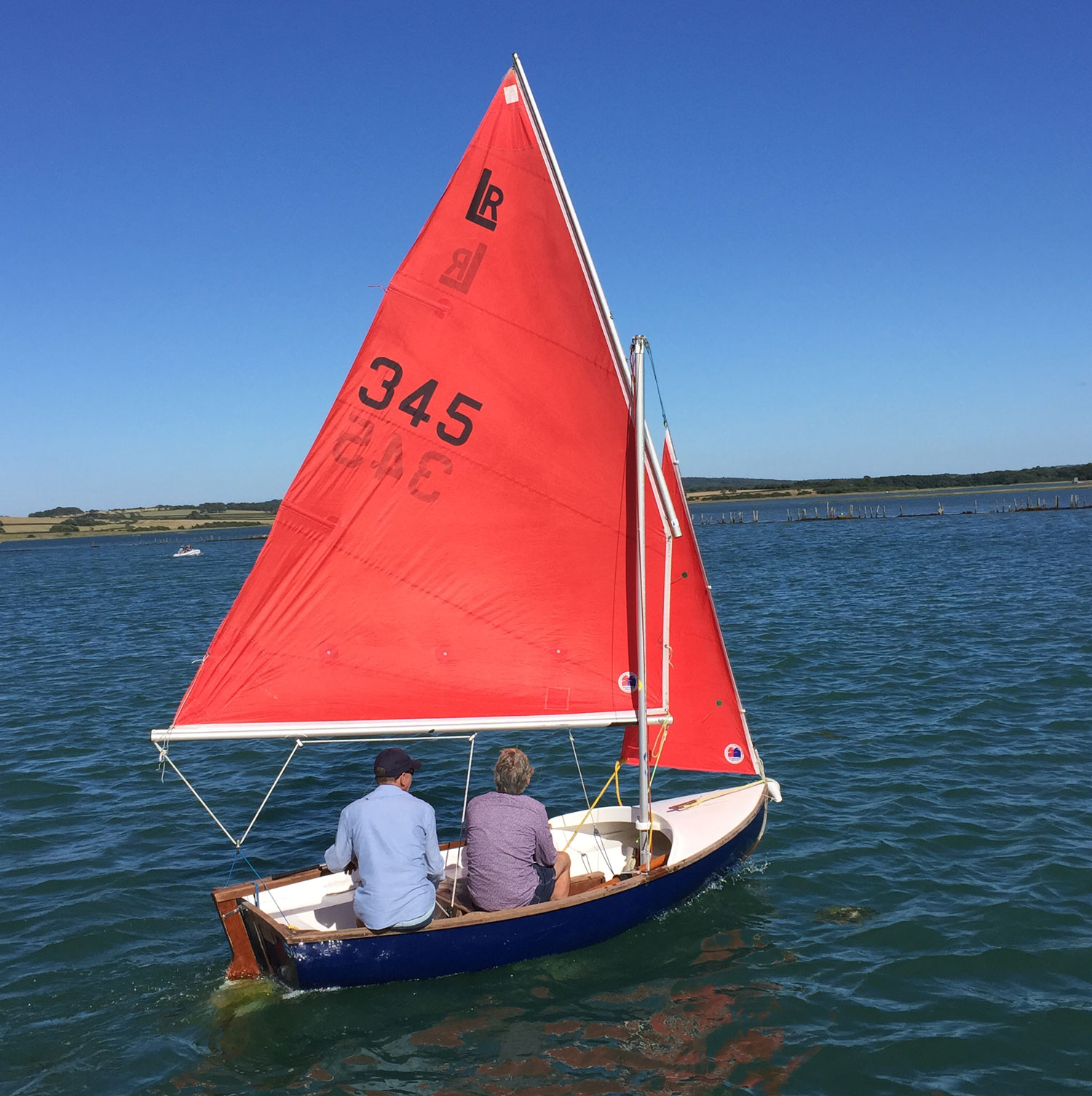
How to Rig a ‘LR’ Mainsail
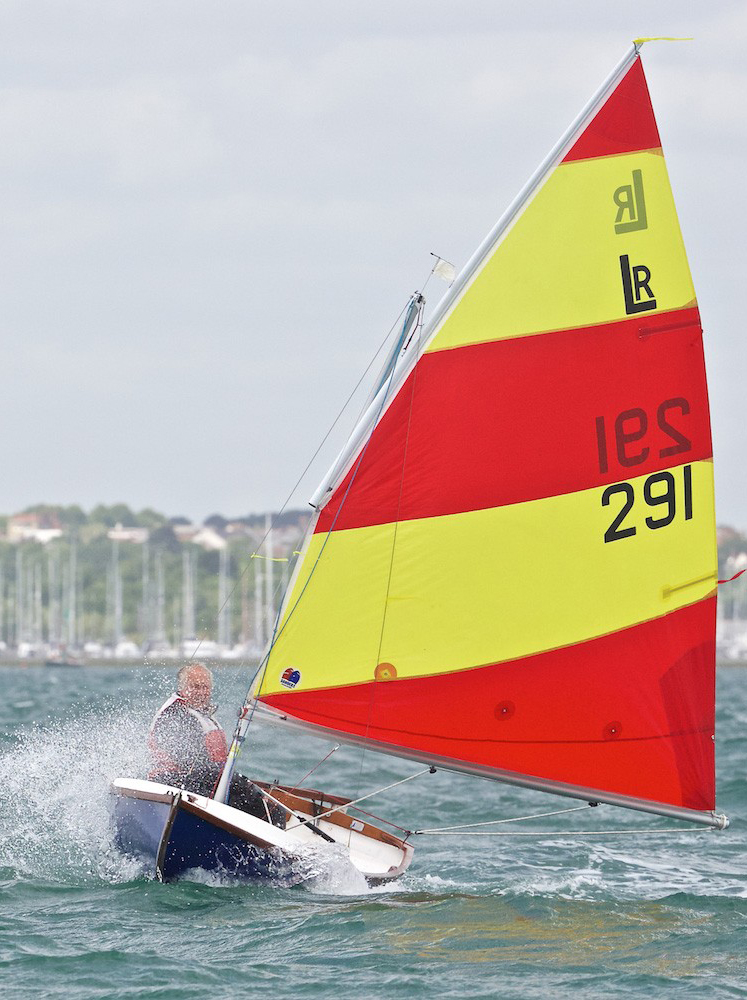
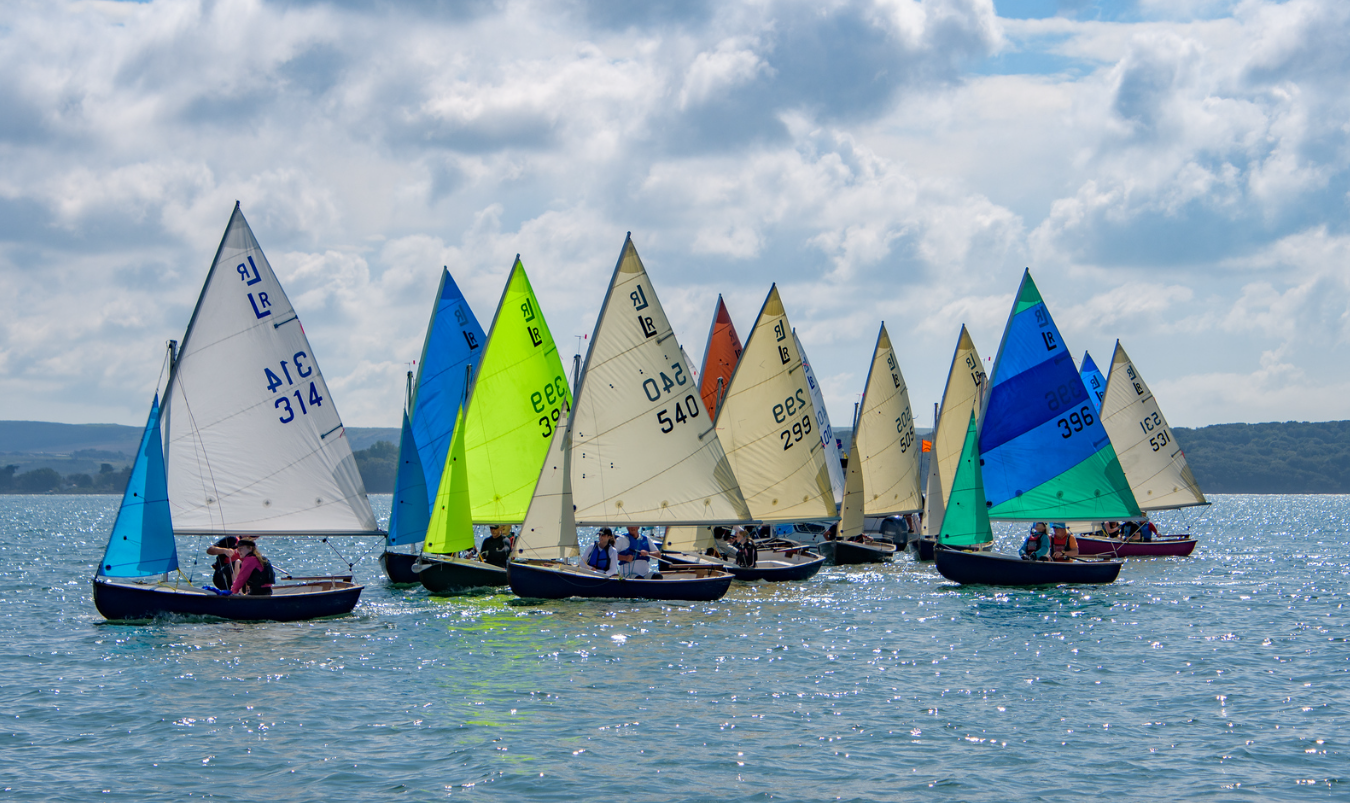
Correctly setting your mainsail is key to getting the best performance from your Scow. Below is a step-by-step guide to hoisting and reefing the sail.
Step-by-Step: Hoisting the Mainsail
1. Preparation
- Loosen the downhaul and kicking strap before hoisting.
2. Halyard Hooking
- Feed the halyard loop through the ring closest to the hook, then over the hook itself.
3. Hoist and Tension
- Hoist the mainsail and apply downhaul tension.
- Ensure there is a 75 mm (3″) gap between the gaff and the mast block — this allows for articulation and avoids block damage.
4. Boom Loop Guidance
- If using a jib: Fit the boom loop around the mast to stop the boom from projecting forward and interfering with the jib.
- If not using a jib: You may attach the downhaul to an eye 200mm forward on the boom. This allows the boom to project ahead of the mast and can enhance performance.
5. Kicker Setup
- Tension the kicker:
- In light winds, it controls mainsail twist.
- In strong winds, it prevents the boom from lifting.
6. Sail Shape Tip
- A diagonal crease from the gaff to the clew usually means more downhaul is needed.
- Over Force 3, some creasing is expected unless reefed.
- Use the lanyards at the gaff and boom to adjust sail tension before hoisting. More tension flattens the sail and helps manage stronger winds.
Safety Tip: When lowering the sail, release the boom loop and downhaul first. Always keep a firm grip on the halyard to avoid the gaff and boom dropping suddenly — your crew will thank you!
Step-by-Step: Reefing the Mainsail
When winds pick up, reefing is essential for balance and safety. Here’s how to do it:
1. Luff Reefing Loop
- Attach a reefing loop to the cringle in the luff and pass it over the end of the boom.
2. Leech Reefing Line
- Thread a line through the clew cringle, then back through the leech cringle. Tension and tie it off around the boom. This flattens and secures the sail.
3. Halyard Setup for Reefed Sail
- Pass the main halyard loop through both gaff rings, then onto the hook as usual.
4. Tidy the Surplus Sail
- Use the three reefing points to tie up excess sail neatly around the boom.
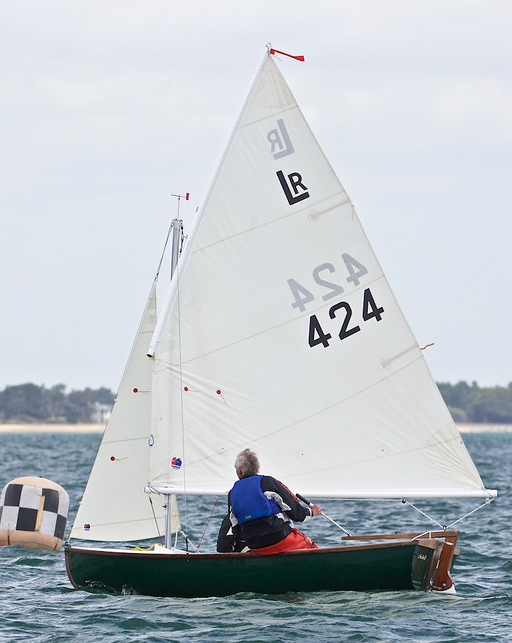
Pricing Guide for all Scow Classes
Please note that prices are subject to change at any time. For more up-to-date costs, get int touch.
Mainsail – White: £470.00 + vat
Mainsail – Coloured: £495.00 + vat
Jib – White: £168.00 + vat
Jib – Coloured: £178.00 + vat
Spinnaker: £296.00 + vat
For colour combination options – please enquire upon placing an order. Colours have become more limited in recent years, but we will be happy to advise on current availability.
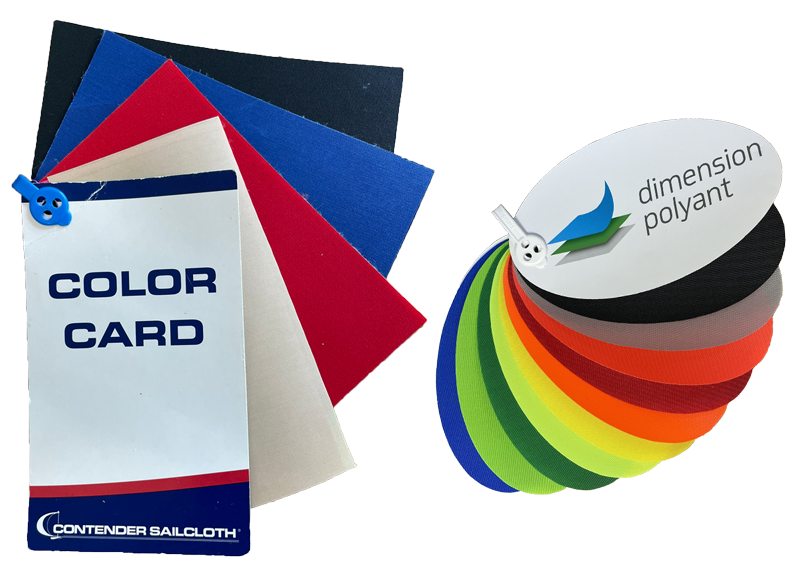
Want to find out more about our unique range of One Design sails? Get in touch with the Sanders team, we’d love to hear from you!
HAWK 20
LIGHTNING
368
NORDIC
FOLKBOATS
POOLE
DOLPHIN
R19
SEABIRD HALF
RATTER
X ONE
DESIGN
YACHTING WORLD
DAYBOAT
